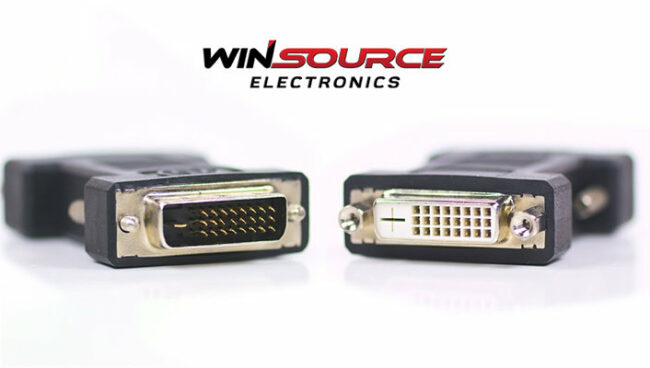
The Digital Display Working Group (DDWG) developed the Digital Visual Interface (DVI) as a video display interface. A visual source, such as a video display controller, is connected to a display device, such as a computer monitor, through a digital interface.
The objective behind its creation was to establish a transfer protocol for uncompressed digital video content that would gain widespread acceptance throughout the industry. In this article, we will talk more about the DVI connector. So, let’s dive in!
Table of Contents
ToggleTypes Of DVI Connectors
When connecting your display devices, such as monitors or projectors, to your computer or other video sources, it’s crucial to have the correct connector type.
One of the most commonly used connectors is the Digital Visual Interface (DVI). Here are the three different types of DVI connectors:
DVI-A (DVI-Analog)
Let’s start with DVI-A, which stands for DVI-Analog. This type of connector is primarily designed to transmit analog signals.
It is an analog signal connector using the VGA analog transmission interface protocol. However, it is important to note that the DVI-A connection is not commonly used nowadays.
DVI-D (DVI-Digital)
Next up is DVI-D, which stands for DVI-Digital. Unlike DVI-A, DVI-D is a pure digital connection and is incompatible with analog transmissions. This means that it can only transfer digital signals.
DVI-I (DVI-Integrated)
Lastly, we have DVI-I, which stands for DVI-Integrated. The DVI-I connector is unique because it supports both digital and analog connections. This means it can be used with digital and older analog displays.
It features four extra signal pins compared to DVI-D, specifically designed to transfer analog signals to comply with VGA analog transmissions.
Advantages of DVI Connectors
Now that you know about the various DVI connectors, let’s talk about their benefits. Here are the advantages of DVI connectors:
Fast Speed
DVI connectors transfer digital signals directly to the display device, eliminating the need for time-consuming conversion processes. This results in faster data transfer and reduced signal attenuation, leading to purer and more accurate color representation.
Clear Picture
With a DVI connection, there is no need for multiple conversions between digital and analog signals, which can cause signal loss and interference. Ultimately, this results in a clearer and more detailed picture.
Support for HDCP Protocol
DVI connectors support the HDCP protocol, which enables viewing HD movies with copyright restrictions. However, a special chip must be installed to support HDCP fully, and a fee must be paid.
Distinguishing Among DVI Connectors
DVI connectors can be distinguished by their type and link. There are two main types of DVI connectors: DVI-D and DVI-I. These two types can further be divided into single-link and dual-link variants, with the single-link variant being more common due to its lower cost.
The DVI-D connector is a standard DVI connector that only accepts digital transmissions. It has three rows, eight columns, and 24 pins, with one pin in the top right corner being vacant. This connector is unable to work with analog signals.
On the other hand, the DVI-I connector is compatible with both analog and digital transmissions. Graphics cards that use this connector typically have a conversion connection to enable this compatibility. Thus, the dual-link variant of both types is often used in professional equipment due to its higher cost.
Conclusion
DVI connectors are essential for transmitting video data between sources and display devices. Each variant, including DVI-A’s analog capabilities, DVI-D’s pure digital transmission, and DVI-I’s versatility, plays a unique role in video data transmission.
However, the benefits of DVI connectors, such as high-speed data transfer, clear picture quality, and support for HDCP protocol, make them an invaluable tool in digital display technology. And if you are considering bulk purchasing DVI connectors, feel free to head over to WIN SOURCE.

COMMENTS